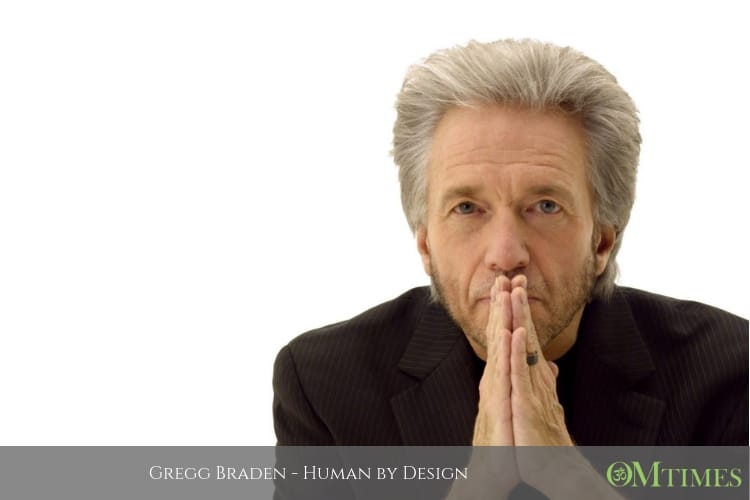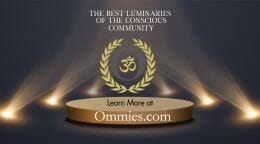Gregg Braden – Human by Design

But what’s changed is in the last few years, the technology now has pushed the science of DNA analysis to the point where we now are able to look at the DNA of beings who have lived hundreds of thousands of years ago. It’s like the movie if you ever saw the movie, Jurassic Park, they were able to extract the DNA from the fossilized remains of ancient forms of life.
To the best of my knowledge, we can extract, and we do extract, the DNA from ancient forms of life, from the bone marrow, the fossilized bone marrow. We can compare that DNA to our modern DNA today, and now we don’t have to guess. We can tell what forms of life were related to, which ones were not, which ones we descended from and which ones we have not.
And what the data is saying very clearly, we’ve been taught that we descended from Neanderthal. We now know that is not true, but that’s not being shared. You won’t see that in the mainstream, the classrooms, and textbooks. Their DNA and ours, there’s not enough overlap to show that we descended from them. The studies also show now that we walked the earth with them. We shared the earth with them. We interbred with them. We had Neanderthal boyfriends and girlfriends, they tell us. So, yeah, we may have some Neanderthal DNA in modern humans, but it doesn’t mean that we descended from them and if we walked the earth with them, we could not have descended from them.
What the DNA is also telling us and this is where it gets really interesting is that what is called anatomically modern humans or AMH is the acronym, is that we appeared suddenly. We showed up. We emerged on earth about 200,000 years ago, and scientists agree with that. There’s no argument there. The problem is, where do we come from, and this is where the problems emerge because what the DNA analysis is showing us is that we did not evolve slowly, gradually over a long period to time to get to that point, 200,000 years ago.
So I can be specific about what those are, but these are the two places where the evidence no longer supports this story, the physical evidence, and the DNA evidence. It’s led to what is called forbidden territory because now the scientists if they’re honest with themselves what they have to say is that evolution, as we know it, cannot account for the genetic changes that have led to our existence.
So when they began looking at this, what’s called forbidden territory because evolution did not produce these changes and for me, this is what’s important. What I know is the story that we’re teaching our young people is not the true story. It did not happen. So this is an invitation. The science is an invitation to free our scientists and our young people today from the shackles of an obsolete story and false assumptions in science, and allow them to follow the evidence to the story that it will tell, rather than trying to force the evidence into a pre-existing story that we know has not been true for 150 years.
Dirk Terpstra: Well, that interests me so much, who are we then? You know if we are not just a random act of creation, but we have been created intentionally, who are we?
Gregg Braden: Well, this is the second part of the story. I have a new book. It’s called Human by Design. It is essentially a two-part book. The first part of the book describes the science that I’m sharing with you right now. The second part of the book answers the question that you’re asking, in the sense that these changes that give us our unique ability for self-regulation of our biology, they open the door to this extraordinary potential that is rarely realized by most people.
This is the kind of potential that we see in monks and nuns in Tibet, isolated on mountaintops, in a monastery half a world away, or mystics or yogis or shamans or curanderos, or some kind of extraordinary being who has left their everyday lives. And what we’re now discovering is what we used to think were extraordinary abilities, actually, are ordinary abilities that we simply have forgotten over time, and they are available to each of us, and they’re available because of the changes that happened 200,000 years ago.
Who or whatever is responsible for giving us these uniquely human capabilities, has given us a way to awaken in our everyday lives these abilities that we used to think were relegated to mystics, and yogis, and my sense, my personal belief, this isn’t science.
I think as we embrace the gifts that were left to us, that will be the path that leads us to the answer of who we are, as we begin to live our lives differently, very, very differently.
Dirk Terpstra: It’s a beautiful thing, because, of course, it’s not only what we can give, but it’s also how we can receive, then it becomes a natural pattern as energy flows back and forth. Now, in the chapter “We Are Wired for Long Life, you share evidence that humans can live two, three times longer than we do now. Two questions for you related to that subject. Where does your interest come from to extend possible human life, so do we have that capacity? What evidence do you use to back this claim?
Gregg Braden: The science is rock solid. What the science shows us now is that every organ in the human body, even the organs that we were told could not, every organ in the human body has now been documented with the ability to do three things. First, stop the damage that it’s sustaining. Secondly, heal the existing damage, and third, rejuvenate to become healthier in time, so even though the organ may chronologically be older, biologically it becomes healthier and younger by the biological markers.
Every organ, so brain tissue, spinal cord tissue, pancreatic tissue, heart tissue, all of these organs have been documented with this ability given the right environment, and this is the key, what does that environment mean? When you say environment, people usually think of the world around us, and it can be. The nutritional environment, very specific kinds of nutrients contribute to longevity. But perhaps most important and least recognized is the emotional environment of the individual, thoughts, feelings, emotions, and beliefs. What we now know, that every emotion that we have, the good ones and the bad ones, but every significant emotion that we have in our lives creates a chemical in our bodies that will match that emotion, and it creates what is called neuropeptides. It’s a very specific form of a molecule for both good things and bad things. Well, the good experiences rarely cause us problems. We don’t get stuck in joy. We don’t say you know, “We’ve got so much joy in our lives; we’ve got to heal that.” So the joy is not the problem.
It’s the trauma. When we experience trauma, and we don’t know how to heal it, when we’re young, we don’t have the tools. So your body will store those chemicals in an organ until we have the ability, either to come back and resolve the trauma to release those chemicals, or if we don’t do that, it’s not uncommon for those chemicals to let us know that they are there because the organ appears to have some kind of a disease.
And so now, when we go back and look at healing, it’s a very different way of thinking about healing because the healing comes from us finding ways that we can go back into our bodies and release that trauma, and there are many ways to do that. That’s what a lot of the self-help modalities are all about. So now what the science is showing is that, when we do that, there is a biological impact on the DNA. At the end of the DNA are specialized portions called the telomeres.
They’re the little DNA caps to protect the rest of the information and as we go through life–when we’re born we have a large complement of these telomeres. By the time we are 35, we’re down to about half.
Our bodies want to live and heal. So that’s how long the body can hold up to the stress and the afront of oxidation, environment distress, emotional stress, doing nothing.
As we begin to apply these inner technologies what we see is those numbers move up tremendously. In the mainstream media, scientists recently announced they believe that 140 years of age was an achievable age. They said if you’re living today because of where technology is with both pharmaceuticals and artificial organs, people are living today, they’re not surprised if you reach adulthood today that you will extend your life to around 140. My feeling is why stop there because the organs are designed to repair and heal themselves, not to wear out constantly.
Continue to Page 3 of the Interview with Gregg Braden
Dirk Terpstra is an intuitive speaker, coach and certified HeartMath trainer. Dirk carries out a simple message: You can only be at peace, feel fulfilled and be valuable to others, when you are honest with yourself and start closing the gap between who you appear to be and who you really are. You will then discover that you are beautiful and that all the answers already lie inside of you.





